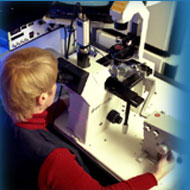
Environmental Factor, May 2008, National Institute of Environmental Health Sciences
NIEHS Represented at Communication Workshop
By Eddy Bll
May 2008
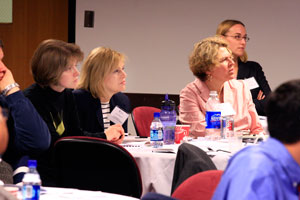
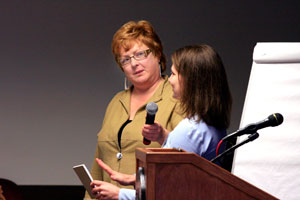
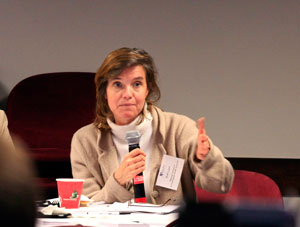
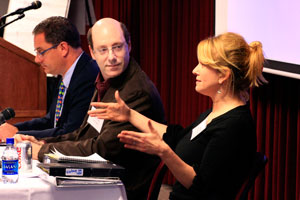
NIEHS employees were among more than 50 participants at a communications skill-building workshop held April 3 at North Carolina State University (NCSU). The day-long event, “Communicating Science: Tools for Scientists and Engineers,” attracted researchers, students, and communicators from universities and other organizations in and near the Triangle.
The program was sponsored by American Association for the Advancement of Science (AAAS)(http://www.aaas.org/) ![]() and the National Science Foundation (NSF)(http://www.nsf.gov/)
and the National Science Foundation (NSF)(http://www.nsf.gov/) ![]() . The workshop facilitator and principal presenter was veteran journalist and communicator Denise Graveline, now president of the Washington, D.C. public relations consulting firm don’t get caught.
. The workshop facilitator and principal presenter was veteran journalist and communicator Denise Graveline, now president of the Washington, D.C. public relations consulting firm don’t get caught.
Program organizers Tiffany Lohwater, AAAS public engagement manager, and Susan Mason, head of the NSF Office of Legislative and Public Affairs opened the workshop with preliminary remarks. Lohwater welcomed the group, and Mason discussed the reasons why communicating science is growing in importance as scientists in other countries close the achievement gap between themselves and their counterparts in the United States.
Mason emphasized that communicating their science is not only an obligation for scientists as responsible citizens and recipients of public funding; it is also increasingly a requirement for securing funding in the first place. “We have a new emerging mandate for communicating science,” she explained. “Congress wants to know what we [scientists] are doing and why it’s so important.”
Graveline’s theme for the day was also the inspiration for the name of her business. “Don’t get caught unprepared, speechless or without a message — that’s what we’re going to help you learn to do today,” she told the audience early in the program. “All of the skills we’re going to talk about today are useful not only for media interviews, but also for when you’re doing public talks, when you’re at a cocktail party, when you’re networking, so these are skills that are transferrable across a lot of situations.”
The workshop featured tips and demonstrations by Graveline, two panel discussions, and hands-on Practice Interview exercises and filmed interviews. Graveline’s presentations reinforced the content of workshop materials available on the AAAS Communicating Science Website(http://communicatingscience.aaas.org/Pages/newmain.aspx) ![]() and gave participants an opportunity for hands-on practice with the tools of communication.
and gave participants an opportunity for hands-on practice with the tools of communication.
Attendees practiced crafting a concise three-part message to convey the bottom-line significance for the audience and details that support the value of their research. According to Graveline, mastering the approach can be especially challenging for scientists. It reverses the order of their usual communications in papers and presentations and forces them to be selective in ways they don’t have to be when talking with colleagues about their research.
Following up the hands-on practice of composing messages, Graveline assigned groups of five to six participants the task of selecting representatives to participate in minute to two-minute recorded interviews. Group members worked together to identify the critical three points of the scientist’s message and the details that best fit the Practice Interview format. Afterwards, Graveline replayed the video recordings to stimulate discussions about the quality of the message and body language in each interview.
The AAAS/NSF workshop was the latest in a series of communications opportunities offered over the past year for NIEHS spokespersons, including a panel discussion at Duke University last June and media training at NIEHS in August by representatives of The Communications Center. Several more such opportunities are upcoming in future months, as the Office of Management and Office of Communications and Public Liaison (OCPL) develops additional workshops for Institute personnel.
Announcements will be forthcoming about a science writing workshop and a program on effective presentations. OCPL plans additional communications training later in the summer and fall of this year. AAAS and NSF also plan to continue and expand their series in the year ahead.
Panel Discussions at the Communicating Science Workshop
The agenda included two panel discussion sessions featuring experts from organizations in the Triangle to complement the workshop’s tips, tricks and hands-on practice.
The Media Panel brought together physicist David R. Smith, Ph.D., a Duke University professor of electrical and computer engineering who attracted media attention with his development of what reporters were quick to describe as an “invisibility cloak,”(http://www.dukenews.duke.edu/2006/05/cloaking.html) ![]() the first meta-material with a negative index of refraction; Karl Bates, manager of Research Communications for Duke University News Service; Helen Chickering, health and science correspondent for NBC News Channel and guest lecturer at the UNC School of Journalism. The three, talking from their different perspectives, shared their experiences originating, facilitating, and disseminating science news.
the first meta-material with a negative index of refraction; Karl Bates, manager of Research Communications for Duke University News Service; Helen Chickering, health and science correspondent for NBC News Channel and guest lecturer at the UNC School of Journalism. The three, talking from their different perspectives, shared their experiences originating, facilitating, and disseminating science news.
Public Outreach Panel participants included physicist Michael R. Falvo, Ph.D., a research associate professor in the UNC Department of Physics and Astronomy; Elizabeth Fleming, exhibits development manager at the Museum of Life and Science; and Kristin Jenkins, Ph.D., education and outreach program manager at the National Evolutionary Synthesis Center (NESCent). The panelists discussed the ways scientists can reach the public informally through museum exhibits, volunteer programs and the increasingly popular science café venue.

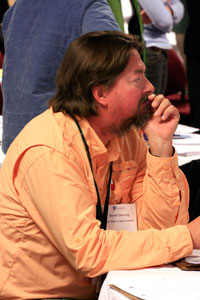
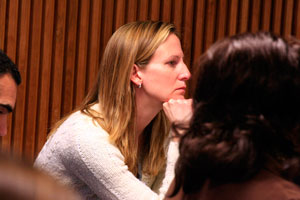
![In a message to workshop organizers, NIEHS Epidemiology Branch Staff Scientist Jane Hoppin, ScD., foreground, described the workshop afterwards as “a great class [and] really worth my time.” She played a reporter in one of the Practice Interviews.](images/SciCom-3.jpg)
